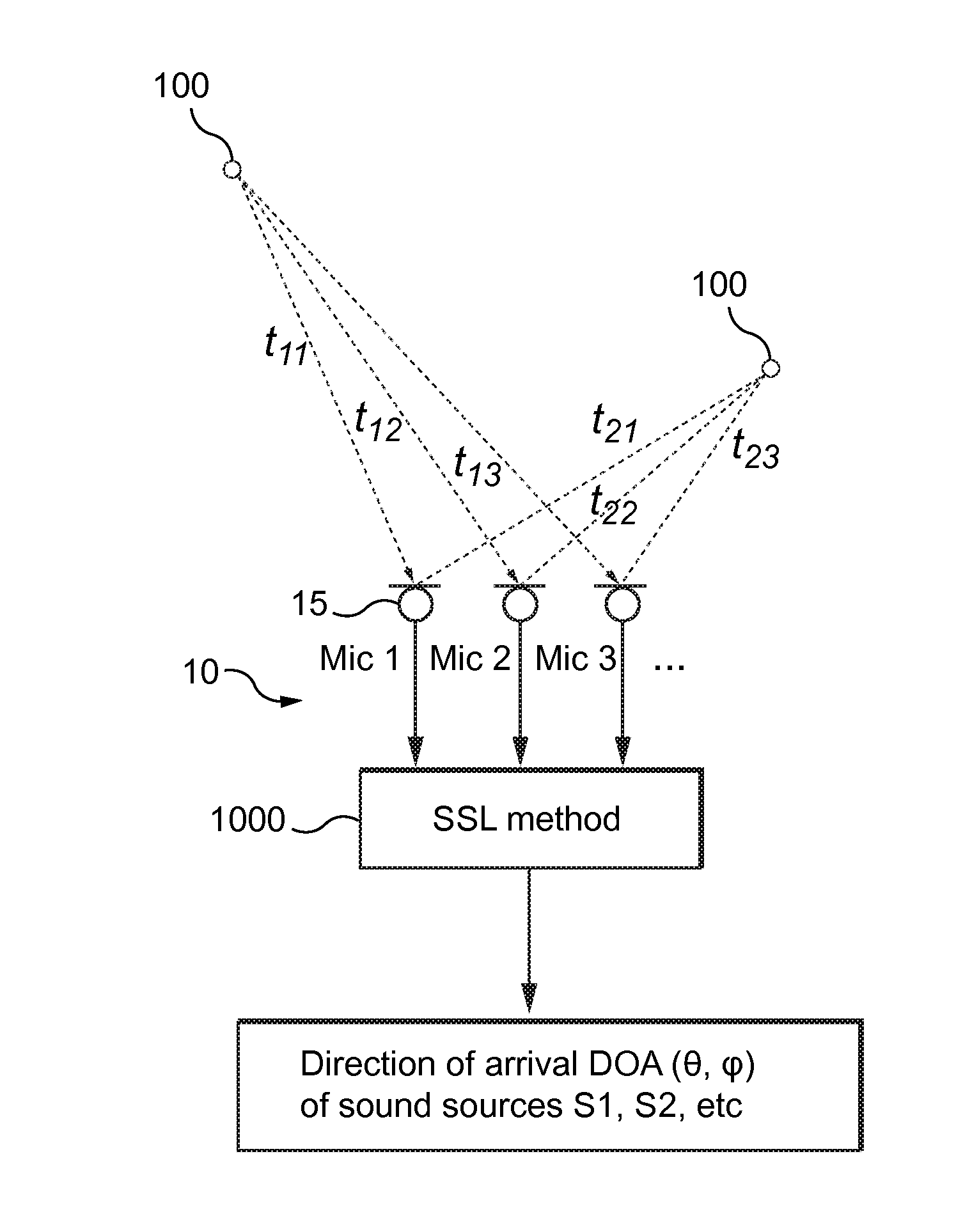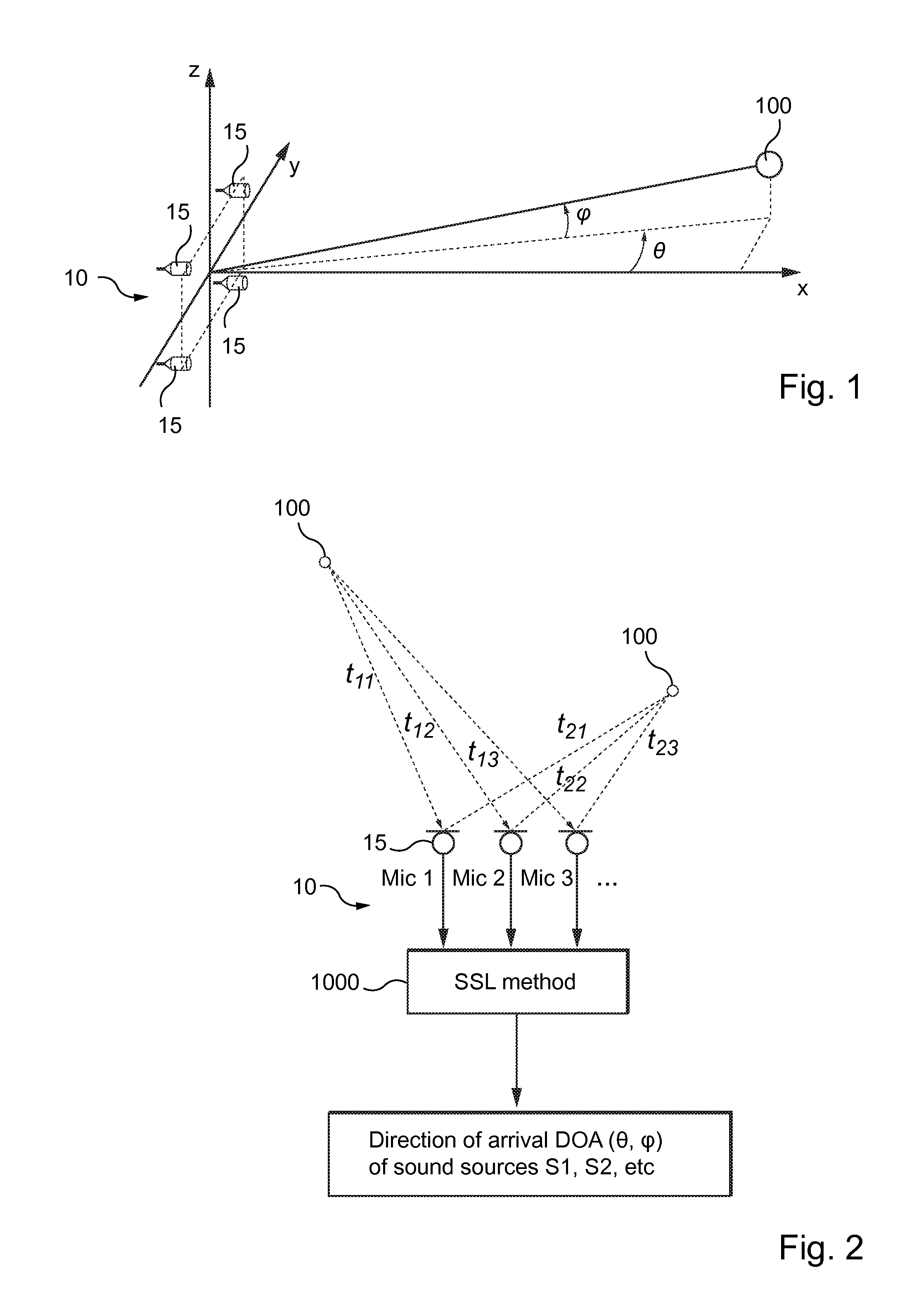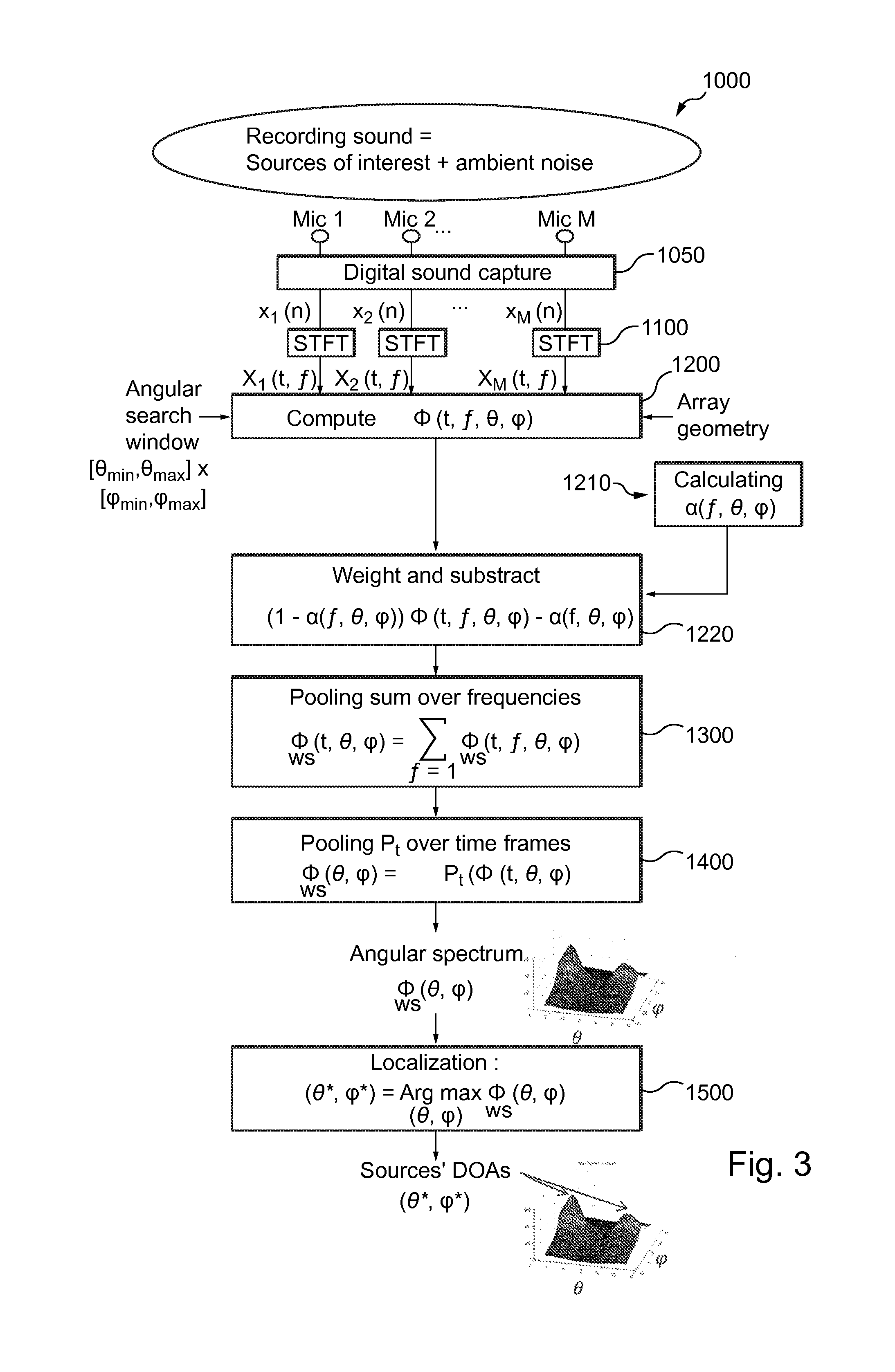Method and device for localizing sound sources placed within a sound environment comprising ambient noise
a technology of ambient noise and sound source, applied in the direction of transducer details, signals processing, electrical transducers, etc., can solve the problems of speech source recording, method failure to provide the right and/or complete ssl, and delay in localization, so as to improve the localization effect of sound sour
- Summary
- Abstract
- Description
- Claims
- Application Information
AI Technical Summary
Benefits of technology
Problems solved by technology
Method used
Image
Examples
first embodiment
[0117]The computation of the environment Steered Response Power SRP(t,f,θ,φ) is performed according to one of the two following embodiments:[0118] corresponding to DS beamforming (Delay-and-Sum beamformer, also known as Barlett beamformer), the following equation may be used as a basis for the calculation of the environment Steered Response Power:
second embodiment
SRP(t,f,θ,φ)=a(f,τ(θ,φ))H{circumflex over (R)}xx(t,f)a(f,τ(θ,φ)) / M2 (6)[0119]alternatively, according to the invention, corresponding to MVDR beamforming (Minimum Variance Distortionless Response also known as Capon Beamformer) the following equation may be used as a basis for the calculation of the environment Steered Response Power:
SRP(t,f,θ,φ)=(a(f,τ(θ,φ))H{circumflex over (R)}xx(t,f)−1a(f,τ(θ,φ))) / −1 (7)
[0120]The steering vectors a(f,τ(θ,φ)) are computed for each frequency f and each direction (θ,φ) and the empirical covariance matrices {circumflex over (R)}xx(t,f) estimated from the transformed data for each time-frequency bin.
[0121]{circumflex over (R)}xx(t,f) is also needed to compute the total energy in equation (4).
[0122]From the set of directions (θ,φ), the respective set of steering vectors a(f,τ(θ,φ)) is computed as defined by equation (2).
[0123]In this equation, the TDOAs τi(74 ,φ) are computed as follows:
τi(θ,ϕ)=1ckT(θ,ϕ)piwhere:(8)k(θ,ϕ)=[cos(θ)cos(ϕ)sin(θ)cos(ϕ)sin...
PUM
 Login to View More
Login to View More Abstract
Description
Claims
Application Information
 Login to View More
Login to View More - R&D
- Intellectual Property
- Life Sciences
- Materials
- Tech Scout
- Unparalleled Data Quality
- Higher Quality Content
- 60% Fewer Hallucinations
Browse by: Latest US Patents, China's latest patents, Technical Efficacy Thesaurus, Application Domain, Technology Topic, Popular Technical Reports.
© 2025 PatSnap. All rights reserved.Legal|Privacy policy|Modern Slavery Act Transparency Statement|Sitemap|About US| Contact US: help@patsnap.com



